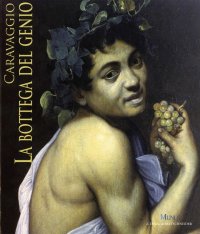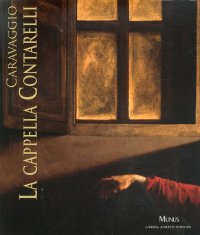L'ora dello spettatore. Come le immagini ci usano.
Edited by M. Di Monte and Gennari Santori F.
Roma, 2020; paperback, pp. 264, col. ill., cm 21x27.
cover price: € n.d.
|
Books included in the offer:
L'ora dello spettatore. Come le immagini ci usano.
Edited by M. Di Monte and Gennari Santori F.
Roma, 2020; paperback, pp. 264, col. ill., cm 21x27.
FREE (cover price: € n.d.)
Caravaggio. La Bottega del Genio
Roma, Museo Nazionale del Palazzo di Venezia - Sale Quattrocentesche, December 22, 2010 - May 29, 2011.
Edited by Falucci C.
Roma, 2010; paperback, pp. 118, b/w and col. ill., tavv., cm 24x28.
(Cataloghi Mostre. 49).
FREE (cover price: € 48.00)
Caravaggio. La Cappella Contarelli
Roma, Palazzo Venezia, March 10 - October 15, 2011.
Edited by M. Cardinali and De Ruggieri M. B.
Roma, 2011; paperback, pp. 150, 60 b/w ill., 60 col. ill., 60 b/w plates, col. plates, cm 24x28.
(Cataloghi Mostre. 50).
FREE (cover price: € 59.00)
Khajuraho. Apogée sensuel de l'art indien. Temples et sculptures.
Iago Corazza - Gilles Béguin
Five Continents Editions
Photographs by Iago Corazza.
French Text.
Milano, 2017; bound, pp. 284, 280 col. ill., col. plates, cm 26,5x35.
ISBN: 88-7439-777-1 - EAN13: 9788874397778
Subject: Essays (Art or Architecture),Religious Architecture/Art,Sculpture
Period: 0-1000 (0-XI) Ancient World,1000-1400 (XII-XIV) Middle Ages
Extra: Bizantyn Art,Oriental Art and Culture,Religion Art
Languages: 
Weight: 2.58 kg
Situated in the northern Indian state of Madhya Pradesh, Khajur?ho is renowned as much for the elegance of its architecture as for the sensuality of its sculpture. Khajur?ho has become one of the unmissable sights for any traveller to India and owes its international reputation to the lavishness of its numerous Hindu shrines. Formerly an important political and religious centre, it is thought to have contained up to ninety-five temples, as the many ruins concealed under otherwise anonymous hillocks scattered throughout the valley attest. Only twenty-five survive. The earliest mention of Khajur?ho dates from the seventh century. After the collapse of the Candella kingdom, the site experienced almost four centuries of oblivion and the once proud city-state turned into a sleepy village nestling in what had become an arid basin for several months in the year. British hunters rediscovered it quite by chance at the beginning of the nineteenth century. Since then the area has undergone several phases of restoration, as befits one of the leading sites of the world's cultural heritage. The highly unusual nature of its temple depictions has given this area a somewhat "scandalous" reputation, unleashing, over the years, interpretations of all kinds.











